Every home has its shadows, and the landing is often one of them. Tucked between rooms and often cut off from daylight, it’s a space that’s all too easy to overlook. But with a little thought – the right lighting, a fresh palette and a few smart design choices – even the darkest landing can become a space that feels light and bright.
We asked a panel of interior, colour and lighting experts to share their go-to advice. From layered lighting schemes and daylight-boosting glazing to reflective finishes and subtle architectural tweaks, their insights reveal how small changes can make a dramatic difference to your landing ideas.
Why are landings often so dark?
“Landings are rarely designed with light in mind,” explains Colin Wells, head of technical at Keylite Roof Windows. “They’re often treated as a connecting corridor rather than a space in their own right, which means natural light isn’t prioritised at the design stage.”
The result is that many landings sit at the centre of the home, surrounded by solid walls and closed doors that prevent daylight from filtering through. Without windows or roof glazing, they rely on borrowed light from adjoining rooms or stairwells, and when doors stay shut, even that limited light can disappear.
Yet these are exactly the kinds of areas where thoughtful design can have the biggest impact. With the right combination of light, colour and glazing, these spaces can feel far more connected to the rest of your home. Here’s what the experts suggest to brighten a gloomy landing.

Colin Wells is head of technical at Keylite Roof Windows. He has over two decades of experience developing daylighting solutions that enhance energy efficiency, comfort and design flexibility in residential architecture.
1. Improve Artificial Lighting
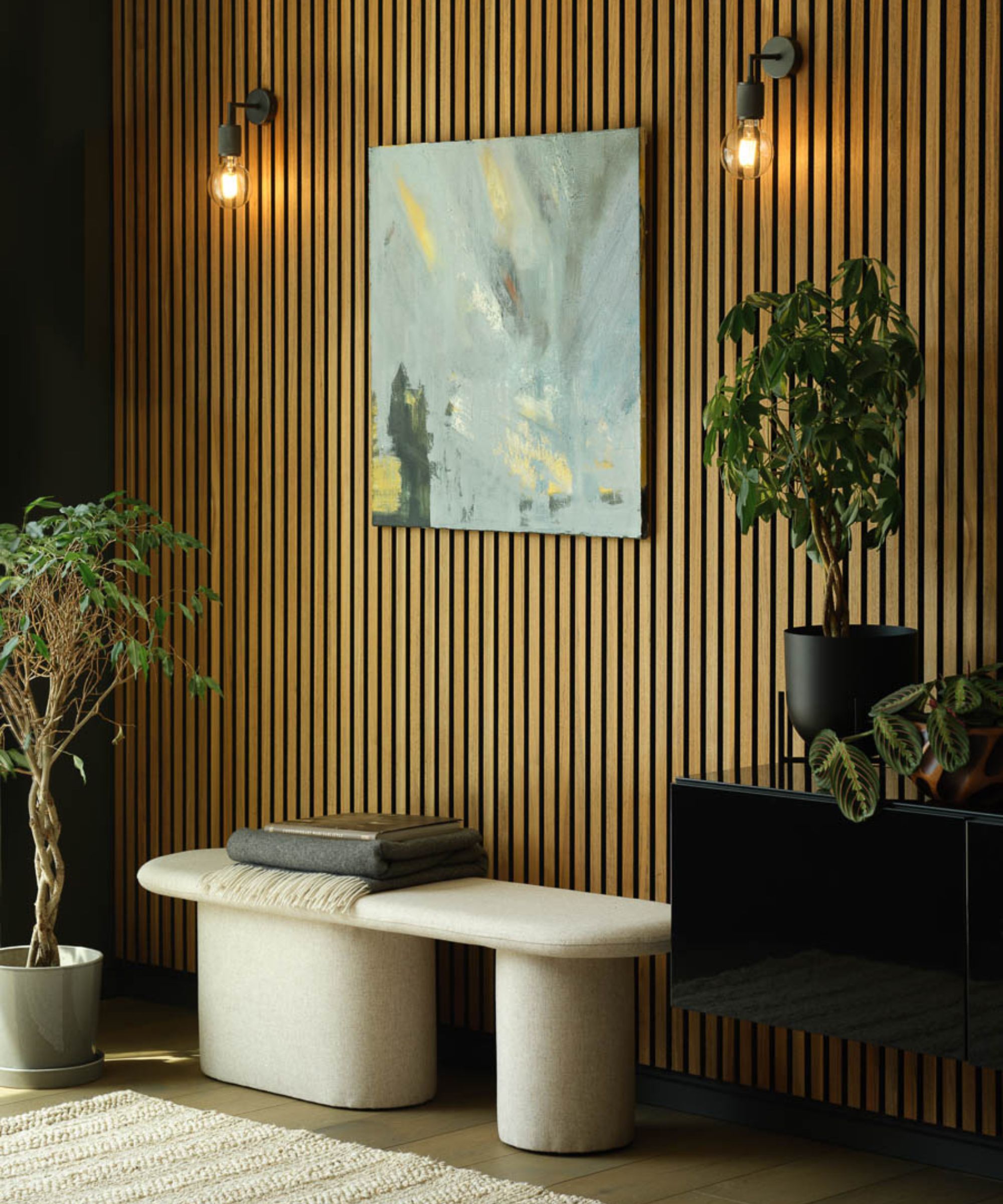
“A well-structured, layered lighting scheme is key to transforming dark areas like hallways and landings,” explains Massimo Buster Minale, founder of Buster + Punch. “A pendant light can make a strong statement in a space that feels quite dull, especially one with an adjustable cable to suit different ceiling heights. In tighter areas, flush or centred spotlights offer a more practical alternative, directing light where it’s needed without overwhelming the space. And if you have artwork or family photos, wall or picture lights will highlight them beautifully while adding another soft layer of illumination.”
Massimo also stresses the importance of selecting the right bulbs for these spaces: “LED bulbs and crisp white lighting are best for dark spaces that need illumination,” he says. “Yellow-toned bulbs, although cosy, can make a dark space feel warmer rather than brighter, so it’s important to choose wisely.”
James Kendall, operations director at KES Lighting & Home, agrees that layering is everything. “One of the most common mistakes I see when it comes to landing lighting ideas is relying on a single overhead fitting,” he says. “It creates shadows and leaves the space feeling flat and underwhelming. A mix of ceiling lights, wall lights and even a small table lamp on a console table adds depth and makes the space feel instantly more inviting.”
According to James, the lighting temperature matters just as much as the placement of your fixtures: “Warm white LEDs around 2700 to 3000K are energy efficient yet still create that welcoming glow that works so well in a hallway.”

Massimo Buster Minale is the founder and creative director of Buster + Punch, a London-born design brand renowned for its bold lighting, hardware and interior details crafted from solid metals.

As operations director at KES Lighting & Home, James Kendall is well placed to offer expert guidance on all aspects of home lighting. James understands just how transformative great garden lighting can be, and has the experience and expertise to transform any space.
Shop landing lighting
2. Use glazing and sun tunnels to introduce natural light
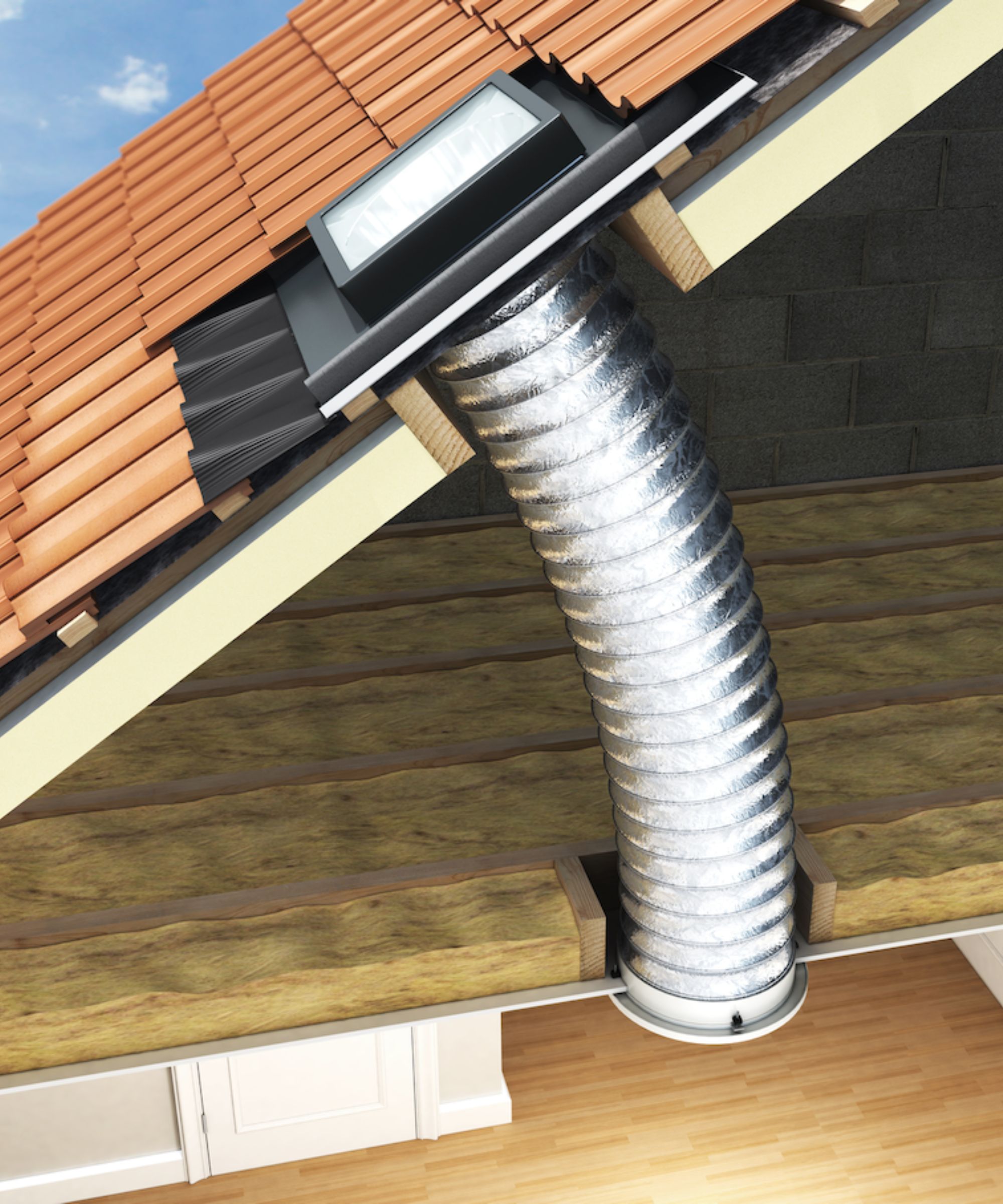
When natural daylight can’t reach a landing directly, the answer often lies above, or through. Rooflights, sun tunnels and internal glazing can all help channel light from brighter parts of the home into shadowy in-between spaces, creating a softer, more open feel.
“One of the most effective architectural ways to transform a dark landing is by bringing in natural light from above,” says Barbara Entwistle, project development manager at VELUX. “Installing a roof window or a sun tunnel allows daylight to reach spaces where traditional windows aren’t possible, such as hallways, stairwells or internal bathrooms. Even a small opening to the sky can flood these areas with soft, natural light throughout the day.”
Barbara’s advice is echoed by Colin Wells from Keylite Roof Windows, who adds that sun tunnels are especially effective where loft space limits window installation. “While glazing remains the most common method for introducing daylight, an alternative for those who do not have access to windows is sunlight systems,” he says. “Sun tunnels channel daylight from the roof into windowless spaces — but placement is key. Position them away from external obstacles, ideally facing south, and choose the right tubing for your layout.”
Rigid tubing, Colin explains, gives the brightest result where there’s a clear path through the loft, while flexible tubing works best around pipework or water tanks. “Flexible systems are easier to install but give a softer brightness,” he says. “Rigid tubing delivers a stronger, more direct light, ideal for long tunnels or where maximum illumination is needed.”

Barbara is project development manager at VELUX. VELUX was founded in 1941 and today manufacture a range of roof windows, including sun tunnels, roof balconies and terrace
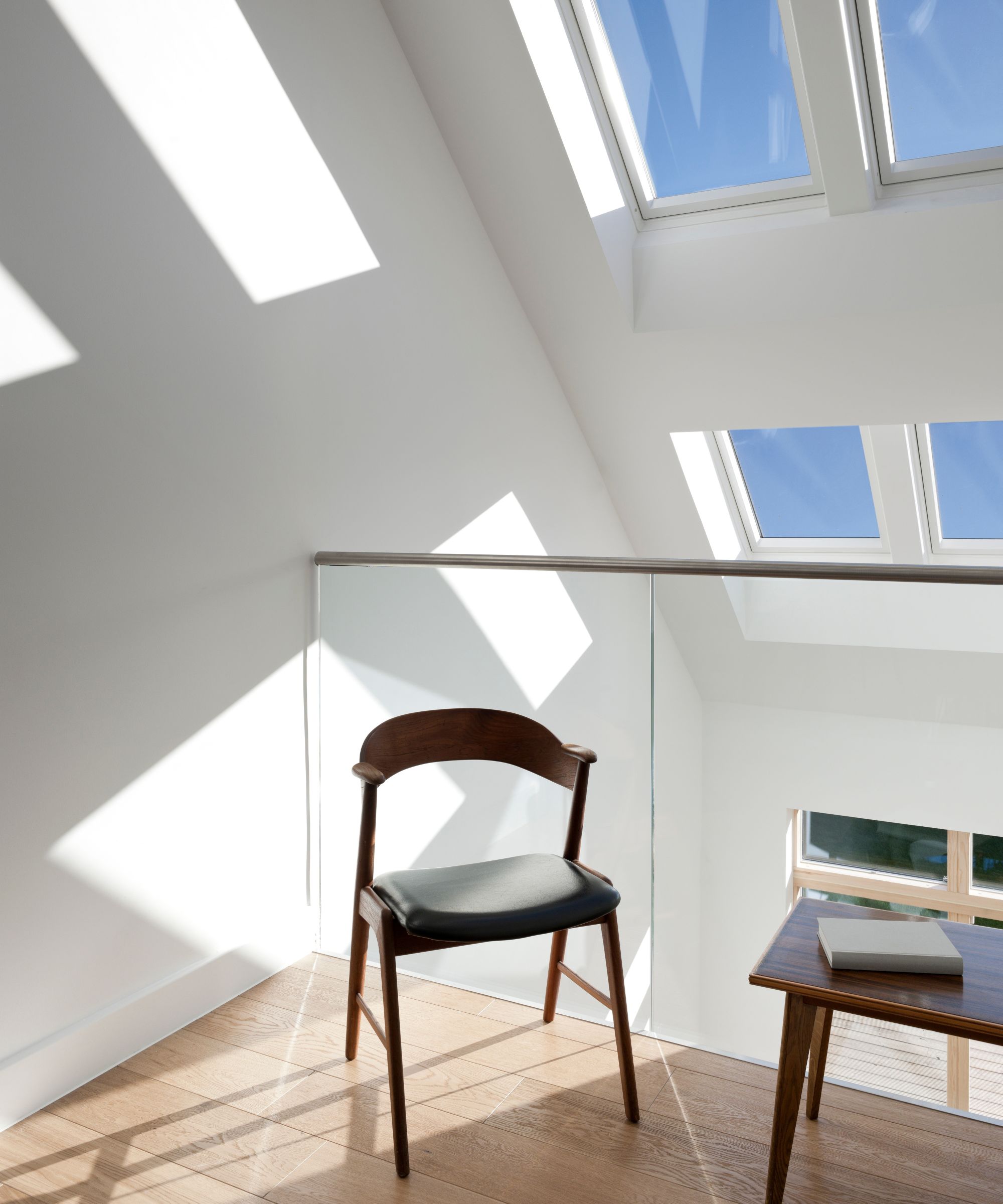
If your landing sits beside a bright room, you can also borrow light horizontally. “If your landing feels like the middle carriage of a train, the best thing you can do is borrow light from the rooms that do get sun,” says Matt Shaw, technical director at Express Doors Direct. “A simple swap to a glazed internal door can transform the whole space. Choose clear glass for maximum light transfer, or reeded or frosted glass if you want daylight without losing privacy.”
Matt notes that good frosted glazing still lets 80–90% of light through, but diffuses it to spread brightness more evenly along the landing. “Think of it as a permanent soft box,” he adds. “You’ll get a brighter, more even glow rather than a single hotspot.”
For period or higher-ceilinged homes, transom windows can also make a subtle architectural difference. “Adding a transom window above an internal door creates a permanent light shelf that throws daylight across the landing ceiling — exactly where you need it most,” says Matt. “In older homes, running a continuous transom line along the corridor visually lifts the ceiling and makes every doorway a source of light.”
Whichever glazing approach you take, the key is to think about how daylight moves through your home and where it can be borrowed, bounced or brought in.

Matt Shaw is technical director at Express Doors Direct, where he leads innovation in internal and external glazing systems, helping homeowners maximise natural light and create bright, contemporary living spaces.
3. Consider finishes
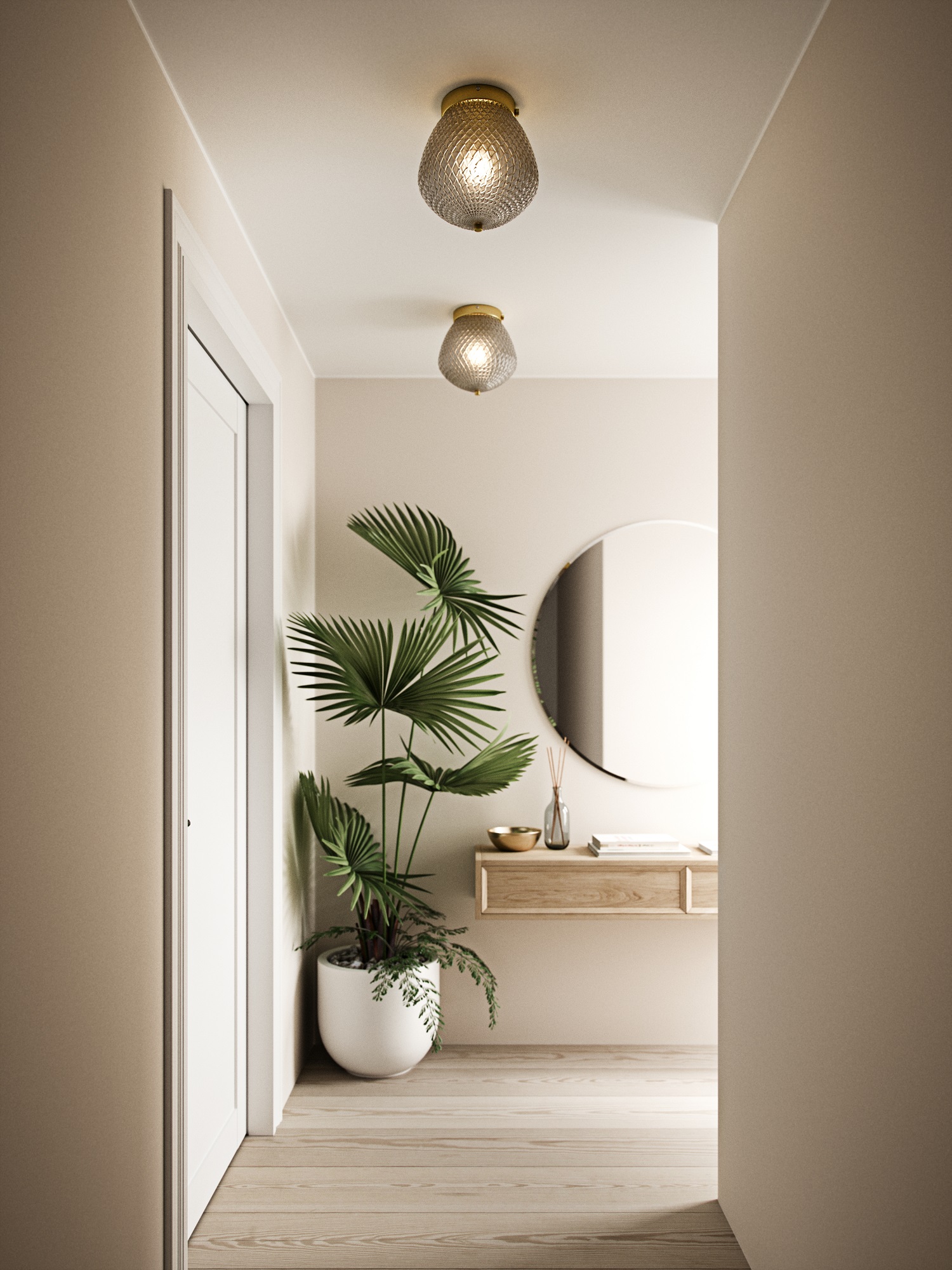
Once you’ve planned your lighting, the next step is to consider your landing finishes. Wall colour, flooring and surface texture will all influence how light behaves, so getting these details right will make a dark landing lighter and feel more expansive.
“Paint offers one of the simplest and most effective ways to open up a space,” says Anna Hill, brand director and colour consultant at Fenwick & Tilbrook. “By choosing the right colour, tone and finish, you can encourage light to move around and reduce the sense of confinement. Pale, cool shades such as soft whites, light greys and pastels tend to reflect light, while colours with subtle undertones of blue, green or violet can add a feeling of freshness. If a pure white feels too stark, an off-white with a warm undertone like taupe or ivory brings warmth without weighing the space down.”
The type of paint finish you choose is just as important as the shade itself. “A soft satin sheen, such as an interior eggshell, will reflect light without being overly glossy,” Anna adds. “Keep ceilings matt for a calm, luxurious look, and use a slightly higher sheen on the walls to help catch both natural and artificial light.”
Your choice of flooring can make a big difference, too. “Light-toned wood flooring is ideal for creating a bright, airy feel,” says Natalie Mudd, co-founder and creative director of Knot & Grain. “It’s perfect for smaller or windowless spaces like landings and hallways, as it naturally opens up the area and helps light travel further. Opting for pale oak or whitewashed finishes gives an instant lift, and pairing them with a subtle sheen will enhance that sense of spaciousness even more.”

Anna Hill
Anna Hill is brand director and colour consultant at Fenwick & Tilbrook, an independent British paint manufacturer celebrated for its curated palettes and expert insight into how colour transforms mood, light and architectural details.

Natalie Mudd
Natalie Mudd is co-founder and creative director of Knot & Grain, a British brand specialising in handcrafted wood flooring.
4. Choose appropriate furniture and storage
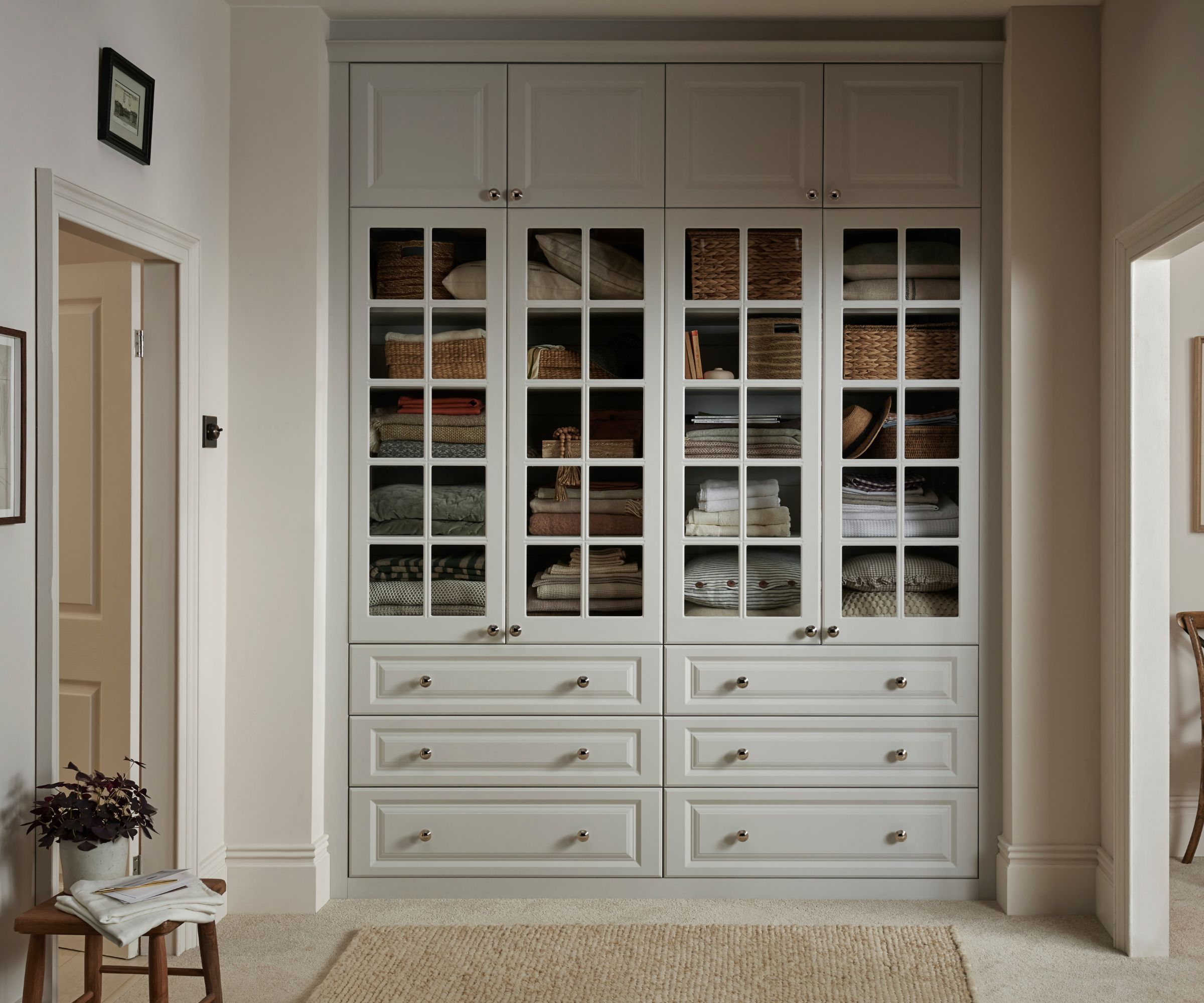
Because landings are often little more than a halfway point between rooms, they have a habit of attracting everything that doesn’t quite belong elsewhere. The best landing storage ideas create room to breathe and allow light to flow freely from one space to the next.
“Vertical space is your best friend in a compact landing,” explains Ethan Fox, interiors expert at Furniture World. “Hooks or shelving that extend upwards rather than outwards make the area feel taller and less cluttered. Built-in storage is another smart choice as it provides room for essentials without eating into the walkway.”
“Furniture with light visual weight helps open up a dark landing,” Ethan adds. “Narrow, sleek pieces work best, as they allow the space to flow without feeling crowded.”
Adding greenery is another subtle but effective trick for brightening a dark hallway or landing. “Plants bring colour and softness to what can otherwise feel like a forgotten corner,” says Jo Lambell, founder of Beards & Daisies. “Even in low light, varieties like snake plants or peace lilies will thrive. Taller planters or trailing greenery naturally draw the eye upwards, helping the space feel more open.”

Joanne Lambell is the founder of Beards & Daisies, the UK’s leading online plant retailer, known for its stylish indoor greenery and houseplant expertise.
Now that you’ve learned how to lighten up your space, these small landing ideas reveal how to style a compact area so it feels brighter, open and far more spacious.
View the original article and our Inspiration here



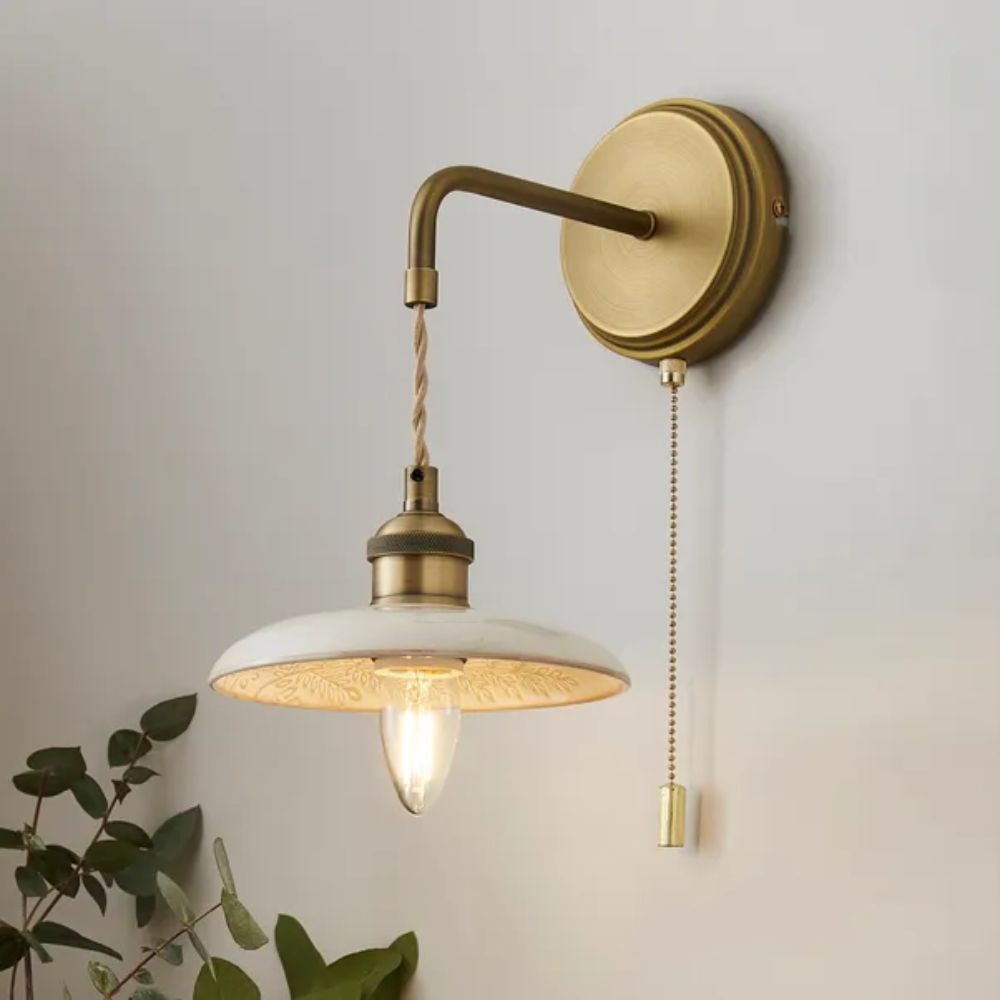
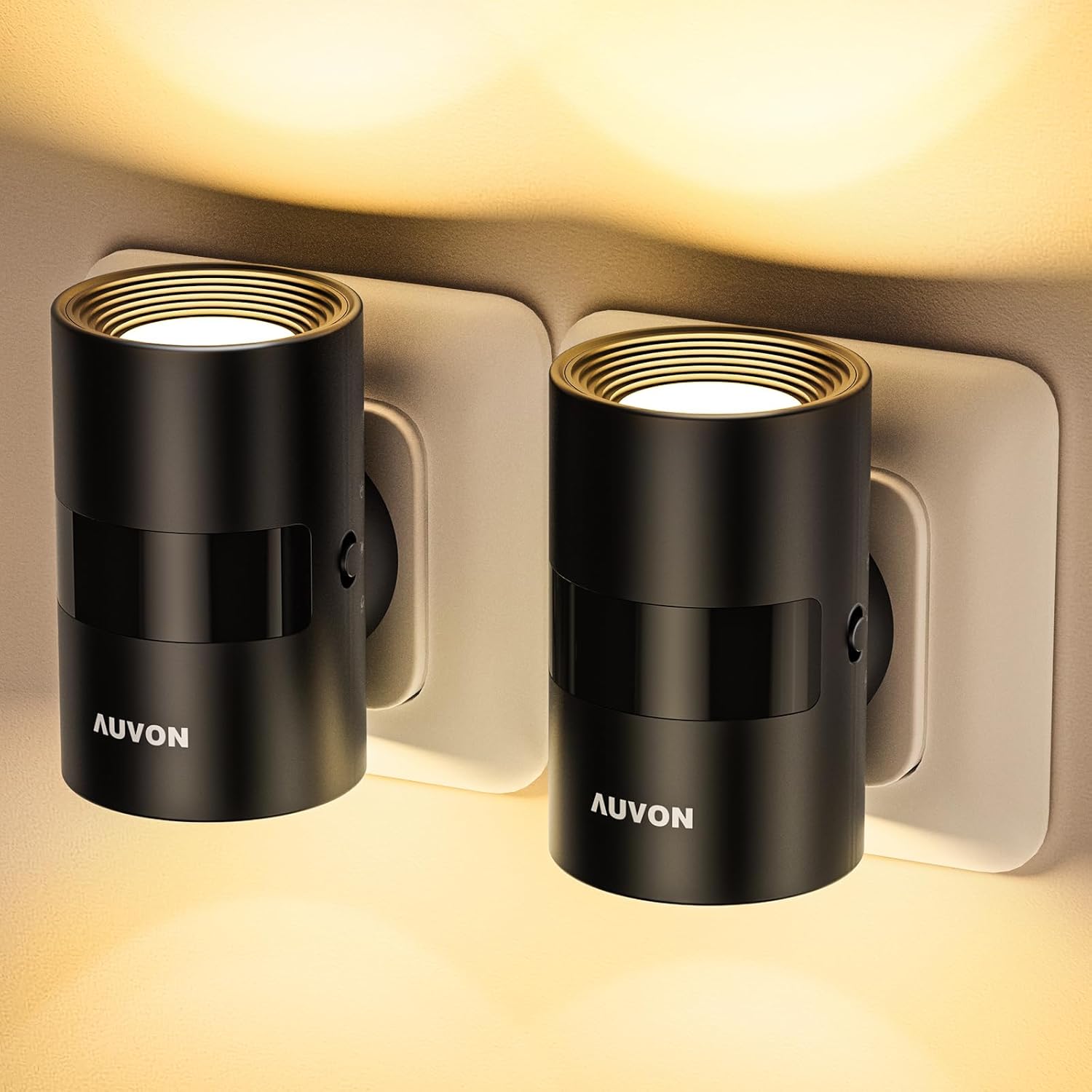
Leave a Reply